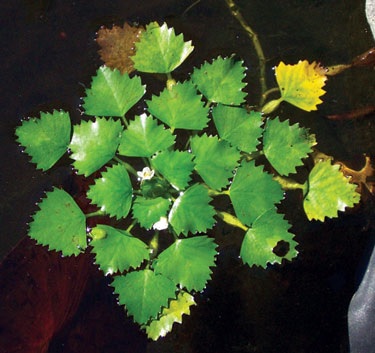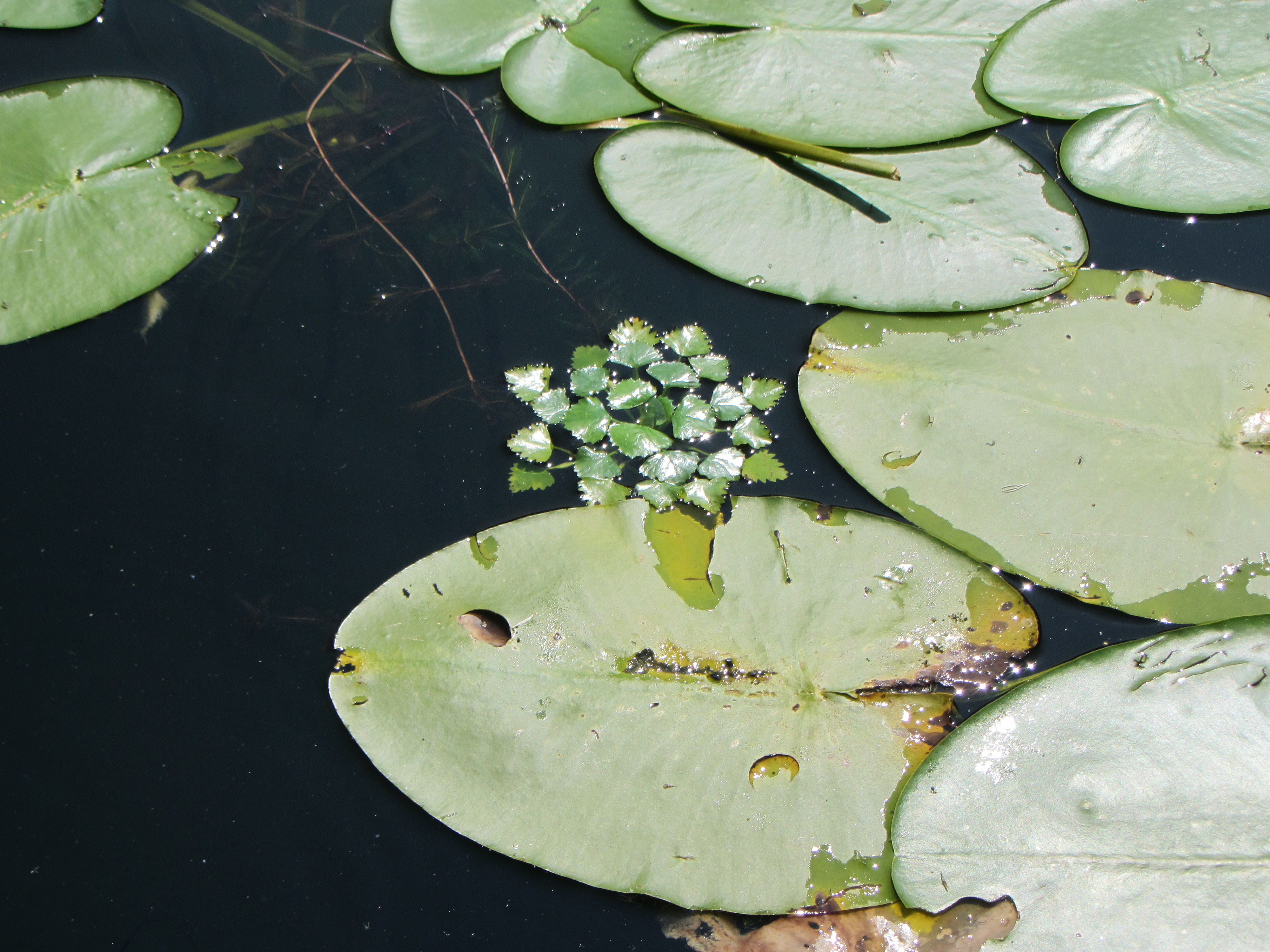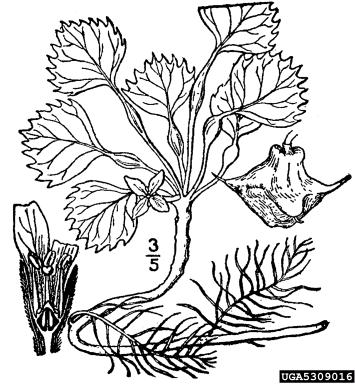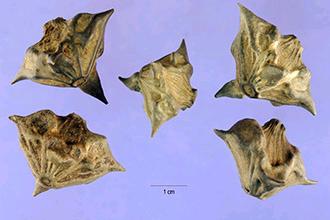Water Chestnut – a new invasive plant found in our lakes!
 Water Chestnut is an invasive plant which is present in three ponds in Mountain Lakes Park. That is just too close for comfort! It was only a matter of time before it found its way to our lakes… and it has! Water chestnut was found in Lake Waccabuc in July 2014. While we pulled those plants, we must remain alert for more.
Water Chestnut is an invasive plant which is present in three ponds in Mountain Lakes Park. That is just too close for comfort! It was only a matter of time before it found its way to our lakes… and it has! Water chestnut was found in Lake Waccabuc in July 2014. While we pulled those plants, we must remain alert for more.
This invasive plant is a rooted, floating leaf plant. Please keep a watch for it mixed in with the lilies, spatterdock, and watershield that we currently have on our lakes. These native plants might seem like a nuisance, but water chestnut is much worse! It is much more aggressive, and it has seeds that are sharp, making it dangerous to walk anywhere the seeds float or sink. (This is not the same as the water chestnut used in some Asian cooking!) 
This plant is now the dominant plant in many parts of the Hudson River, where it forms a dense canopy and inhibits boating, swimming, and wading. It also completely shades out any other plants to keep them from growing in areas where it is found.
More about Water Chestnut (Trapa natans)
Water Chestnut is a rooted, aquatic plant with both floating and submersed leaves. The floating leaves form a rosette and are green, glossy and triangular with toothed edges. The submersed leaves are feathery, and are found whorled around the stem. Plant stems are cord-like and can attain lengths of up to 16 feet. The seeds, called nuts or nutlets, are produced starting in July. The plant can cover the surface so densely that neither light nor oxygen can get into the water, changing the environment. Areas with dense water chestnut have very low fish populations and altered water chemistry.
 Early detection is the key to control since small populations are easier to control or eliminate than large ones. It also costs less to control a small infestation because plants can be individually hand-pulled. The infestations at Mountain Lakes Camps are hand pulled each year. Once seeds are produced, they can be viable for up to 20 years. The way to control water chestnut is to control the seed production and distribution by pulling as many plants as possible before the seeds drop off in mid to late August.
Early detection is the key to control since small populations are easier to control or eliminate than large ones. It also costs less to control a small infestation because plants can be individually hand-pulled. The infestations at Mountain Lakes Camps are hand pulled each year. Once seeds are produced, they can be viable for up to 20 years. The way to control water chestnut is to control the seed production and distribution by pulling as many plants as possible before the seeds drop off in mid to late August.
The seeds, or nuts, have sharp, spiny attachments which help transport and distribute the seeds. Seeds have been transported attached to waterfowl and deer.
What you can do
All of the rest of our floating leaf plants have smooth edges. If you see something in a rosette or with jagged edges, send an email or a photo to threelakescouncil@gmail.com
Please keep an eye out for this plant. If you see it and you can pull it, please reach down low and pull slowly upward to get the best chance of getting the roots, and try to keep any seeds from dropping off. Or else just let us know where you saw it!
